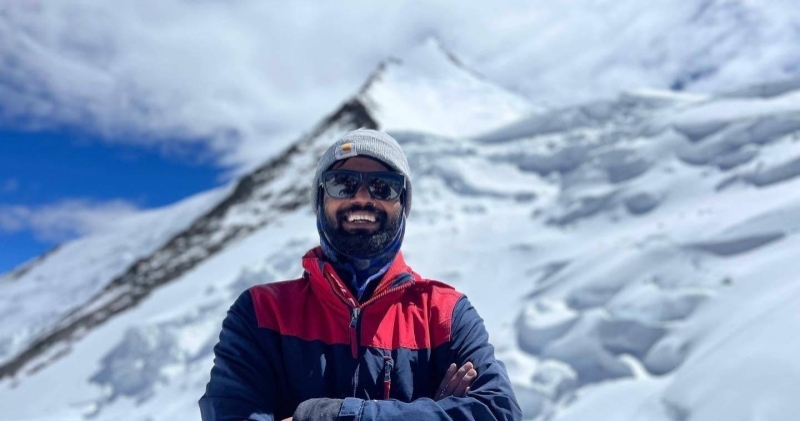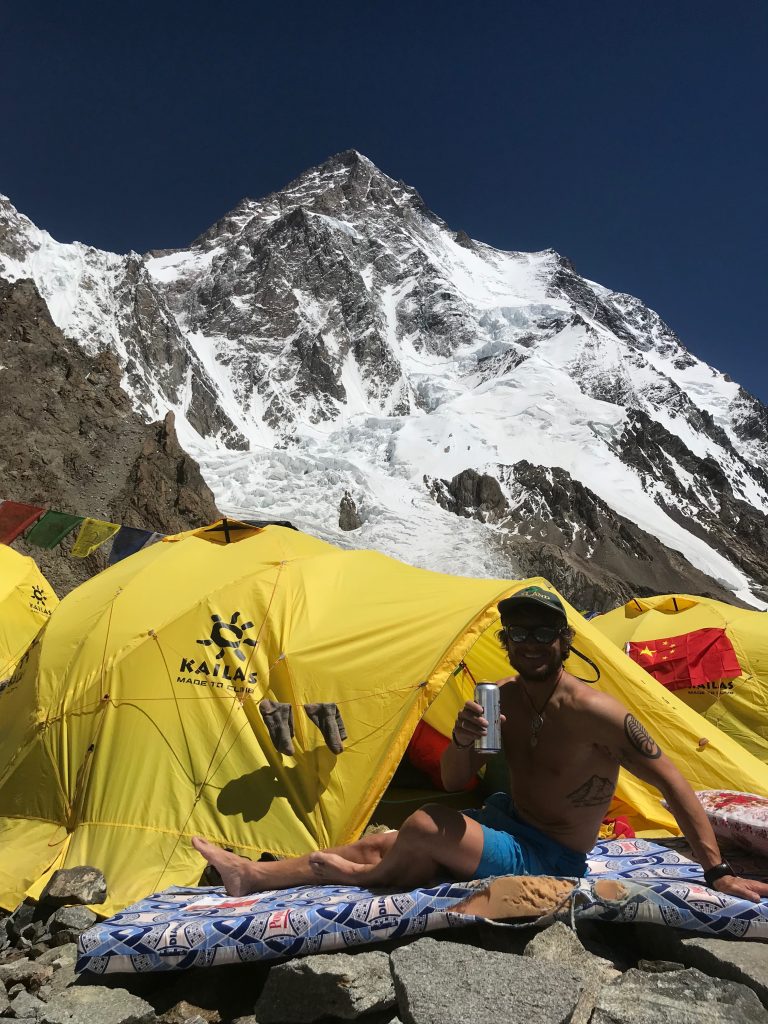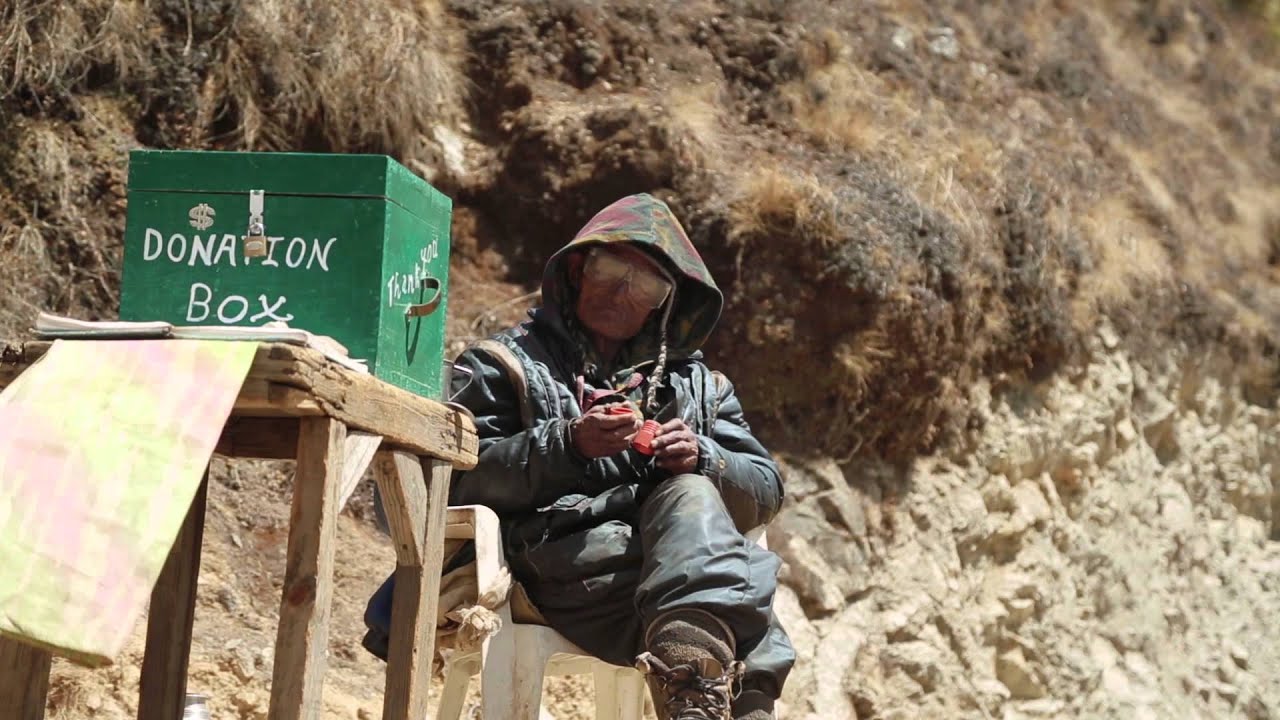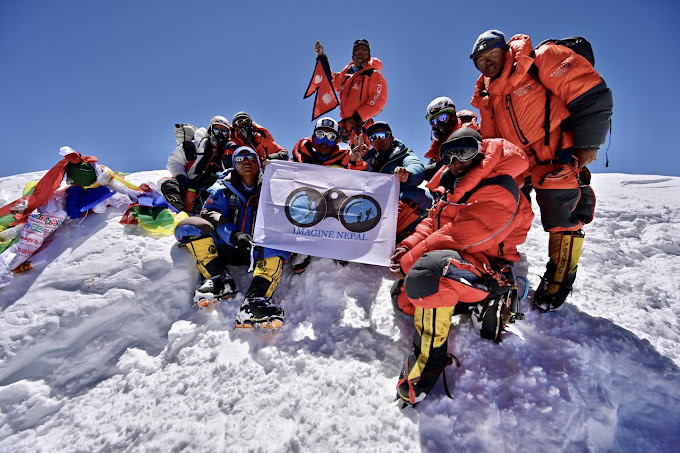Everest - Complete guide to everest base camp trek
The Everest Base Camp Trek is a popular trekking route that leads to the base camp of Mount Everest, the highest mountain in the world. The trek starts from Lukla, a small town in the Khumbu region of Nepal, and follows the trail through several villages, valleys, and high-altitude landscapes. The trek takes about 12-14 days to complete, depending on the itinerary and acclimatization schedule. The trekking route passes through Sagarmatha National Park, a UNESCO World Heritage Site, and offers stunning views of the Himalayan mountain range, including Mount Everest, Lhotse, Nuptse, and Ama Dablam. The Everest Base Camp Trek is considered a challenging trek due to the high altitude, harsh weather conditions, and rugged terrain, but it is also a rewarding and life-changing adventure for many trekkers.
Important Update 2023 – According to an announcement by the Nepal Tourism Board (March 2023), starting April 1, 2023, tourists visiting Nepal will be required to hire a licensed guide or porter before trekking.
Everest Base Camp Trek Overview
How to Get There:
By Air:
The most common way to get to Everest Base Camp is to fly to Kathmandu, Nepal's capital city, and then take a domestic flight to Lukla. You can book flights to Kathmandu from major cities around the world. Some airlines that fly to Kathmandu include Qatar Airways, Turkish Airlines, and Emirates. From Kathmandu, you'll need to take a domestic flight to Lukla, which is the starting point of the trek. The flight takes around 30 minutes and is considered one of the most scenic flights in the world, offering stunning views of the Himalayas.
By Road:
If you have more time and want to experience the journey by road, you can take a bus from Kathmandu to Jiri and then trek to Lukla. The bus journey from Kathmandu to Jiri takes around 7 to 8 hours, and the road is quite rough and bumpy. From Jiri, the trek to Lukla takes around 6 to 7 days and is considered one of the classic treks in Nepal. The trek passes through beautiful villages and offers spectacular views of the mountains.
By Helicopter:
For those who want to avoid the long trek to Everest Base Camp, or for those who have limited time, there's also an option to take a helicopter from Kathmandu to Lukla. The helicopter ride offers stunning views of the Himalayas and takes around 45 minutes. However, the cost of the helicopter ride is quite high and can range from $3,000 to $5,000 USD, depending on the size of the group.
Required permits and paperwork for EBC Trek?
The Everest Base Camp Trek requires several permits and paperwork that trekkers must obtain before starting the trek. Here are the details of the permits and the process to obtain them:
1. TIMS Card: The Trekkers' Information Management System (TIMS) card is a mandatory permit for all trekkers in Nepal. It is issued by the Nepal Tourism Board and is designed to ensure the safety and security of trekkers. The TIMS card can be obtained from the Nepal Tourism Board in Kathmandu or the Trekking Agencies' Association of Nepal (TAAN) in Pokhara.
2. Sagarmatha National Park Permit: The Everest Base Camp Trek passes through the Sagarmatha National Park, and trekkers need to obtain a permit to enter the park. The permit is issued by the Nepal Tourism Board in Kathmandu or the Sagarmatha National Park office in Monjo. The cost of the permit varies depending on the season and the nationality of the trekker.
3. Local Area Permit: The Everest Base Camp Trek passes through several villages, and trekkers need to obtain a local area permit to enter these villages. The permit is issued by the respective village development committee (VDC) or the local government office in each village. The cost of the permit varies depending on the village.
To obtain these permits, trekkers can either apply directly to the issuing authorities or through a licensed trekking agency in Nepal. Trekking agencies can help with the paperwork and facilitate the process of obtaining the permits. It is important to carry the permits at all times during the trek and to show them when requested by authorities. It's also important to note that the permit requirements and costs are subject to change, so it's best to check with the relevant authorities or a licensed trekking agency for the latest information.
1. What are the challenges of the EBC Trek?
The Everest Base Camp Trek is a challenging trek that requires a good level of physical fitness and mental preparation. Here are some of the challenges of the trek and how to prepare for them:
1. Altitude: One of the biggest challenges of the Everest Base Camp Trek is the high altitude. The trek takes you to heights of over 5,000 meters, where the air is thin and oxygen levels are low. Altitude sickness is a common problem, which can cause headaches, nausea, and dizziness. To prepare for the altitude, it's recommended to do some high altitude training before the trek, such as hiking at high altitudes or using a hypoxic training mask. It's also important to acclimatize properly during the trek by taking rest days and staying hydrated.
2. Physical fitness: The Everest Base Camp Trek involves long days of hiking and steep ascents and descents. To complete the trek, you need to have a good level of physical fitness, including cardio endurance, strength, and flexibility. It's recommended to start training at least 3-6 months before the trek by doing regular cardio workouts, hiking, and strength training exercises. The Everest Base Camp Trek is a challenging trek that requires a good level of physical fitness and stamina. The trek involves walking for several hours each day, often on steep and rugged terrain, at high altitudes where the air is thin and the weather conditions can be unpredictable. To complete the trek comfortably, it is recommended that trekkers have a moderate to high level of fitness. Ideally, trekkers should engage in regular physical activity and aerobic exercise for several months prior to the trek, including activities such as hiking, jogging, cycling, or swimming.
3. Weather conditions: The weather in the Everest region can be unpredictable and harsh, with cold temperatures, strong winds, and snowfall. To prepare for the weather, it's important to have proper gear, including warm clothing, waterproof jackets and pants, and sturdy hiking boots. It's also important to be prepared for changes in weather and to be flexible with your itinerary.
4. Mental preparation: Trekking to Everest Base Camp can be mentally challenging, especially when dealing with altitude sickness, physical fatigue, and the harsh conditions. To prepare mentally, it's important to have a positive mindset and to focus on the experience rather than the challenges. It's also helpful to have a support system of fellow trekkers, guides, and porters.
How is the accommodation and food in Everest Base Camp Trek?
During the trek, you'll stay in teahouses or lodges, which are basic accommodations that provide a bed and meals. The teahouses are run by local Sherpa families, and they offer a chance to experience the Sherpa hospitality and culture. The rooms in the teahouses are usually twin or double rooms, with shared bathroom facilities. The accommodation is basic, but clean and comfortable, and most teahouses offer blankets and pillows. It's important to note that during peak trekking seasons, teahouses can get crowded and rooms may not always be available. In this case, you may have to share a room with other trekkers or sleep in a communal room.
The teahouses along the trail serve a variety of meals, including local Nepalese dishes and Western-style meals. The food is usually basic, but hearty and nutritious, as it's important to maintain your energy levels during the trek. Here are some of the typical meals that you can expect to find at teahouses:
Dal Bhat: This is a traditional Nepalese meal that consists of rice, lentil soup, vegetables, and sometimes meat. It's a staple food for Nepalese people and is often served in unlimited quantities.
Momos: These are steamed or fried dumplings that are filled with vegetables or meat. They're a popular snack in Nepal and are often served with a spicy dipping sauce.
Pancakes: Pancakes are a popular breakfast option and are often served with honey or jam.
Eggs: Eggs are also a popular breakfast option and can be served in a variety of ways, such as omelettes or fried eggs.
Snacks: You can also buy snacks such as chocolate bars, chips, and biscuits at teahouses.
It's important to note that the cost of meals and accommodation increases as you get higher in altitude, due to the difficulty of transporting food and supplies to higher elevations. You should also bring some extra cash with you, as ATM machines are not available along the trail and credit cards may not be accepted at teahouses.
What To Pack
Packing for the Everest Base Camp Trek can be overwhelming, as you'll be carrying everything you need on your back for several days. It's important to pack light and bring only the essentials, as every extra pound can make the trek more difficult. Here are some essential items to pack for the Everest Base Camp Trek:
Hiking Boots:
One of the most important items to pack for the Everest Base Camp Trek is a sturdy pair of hiking boots. Your hiking boots should be comfortable, waterproof, and provide good ankle support. It's recommended that you break in your boots before the trek to avoid blisters and discomfort.
Warm Clothing::
The weather in the Himalayas can be unpredictable, and temperatures can drop significantly at night. It's important to pack warm clothing, including a down jacket, thermal layers, and gloves. You should also bring a hat and beanie to keep your head warm.
Sunglasses and Sunscreen:
The sun's rays are stronger at higher altitudes, and it's important to protect your skin and eyes from sun damage. You should bring a pair of sunglasses that provide 100% UV protection and sunscreen with a high SPF.
Sleeping Bag:
During the Everest Base Camp Trek, you'll be staying in teahouses, which provide basic accommodation and bedding. However, it's recommended that you bring your own sleeping bag for extra warmth and comfort. A sleeping bag rated for temperatures below freezing is recommended.
Trekking Poles:
Trekking poles can be a lifesaver during the Everest Base Camp Trek, especially on steep ascents and descents. They provide extra stability and support, and can reduce the impact on your knees and joints.
Headlamp:
A headlamp is a must-have item for the Everest Base Camp Trek, as teahouses usually have limited electricity and lighting. You should also bring spare batteries or a portable charger.
First Aid Kit:
It's important to bring a basic first aid kit with essential items such as bandages, antiseptic wipes, pain relievers, and altitude sickness medication. You should also bring any personal medication that you need.
Water Bottle and Water Purification Tablets:
Staying hydrated is crucial during the Everest Base Camp Trek, as dehydration can exacerbate altitude sickness. You should bring a water bottle and water purification tablets to purify the water from streams and taps along the trail.
Snacks and Energy Bars:
You'll need plenty of energy to complete the Everest Base Camp Trek, and it's important to bring snacks and energy bars to fuel your body. Nuts, dried fruit, and energy bars are good options.
Packing for the Everest Base Camp Trek can be challenging, but with proper planning and preparation, you can bring all the essential items you need without overpacking. Remember to pack light and bring only the essentials, as every extra pound can make the trek more difficult. With the right gear and equipment, you'll be ready to take on the adventure of a lifetime.
1. Risks and safety concerns with EBC Trek?
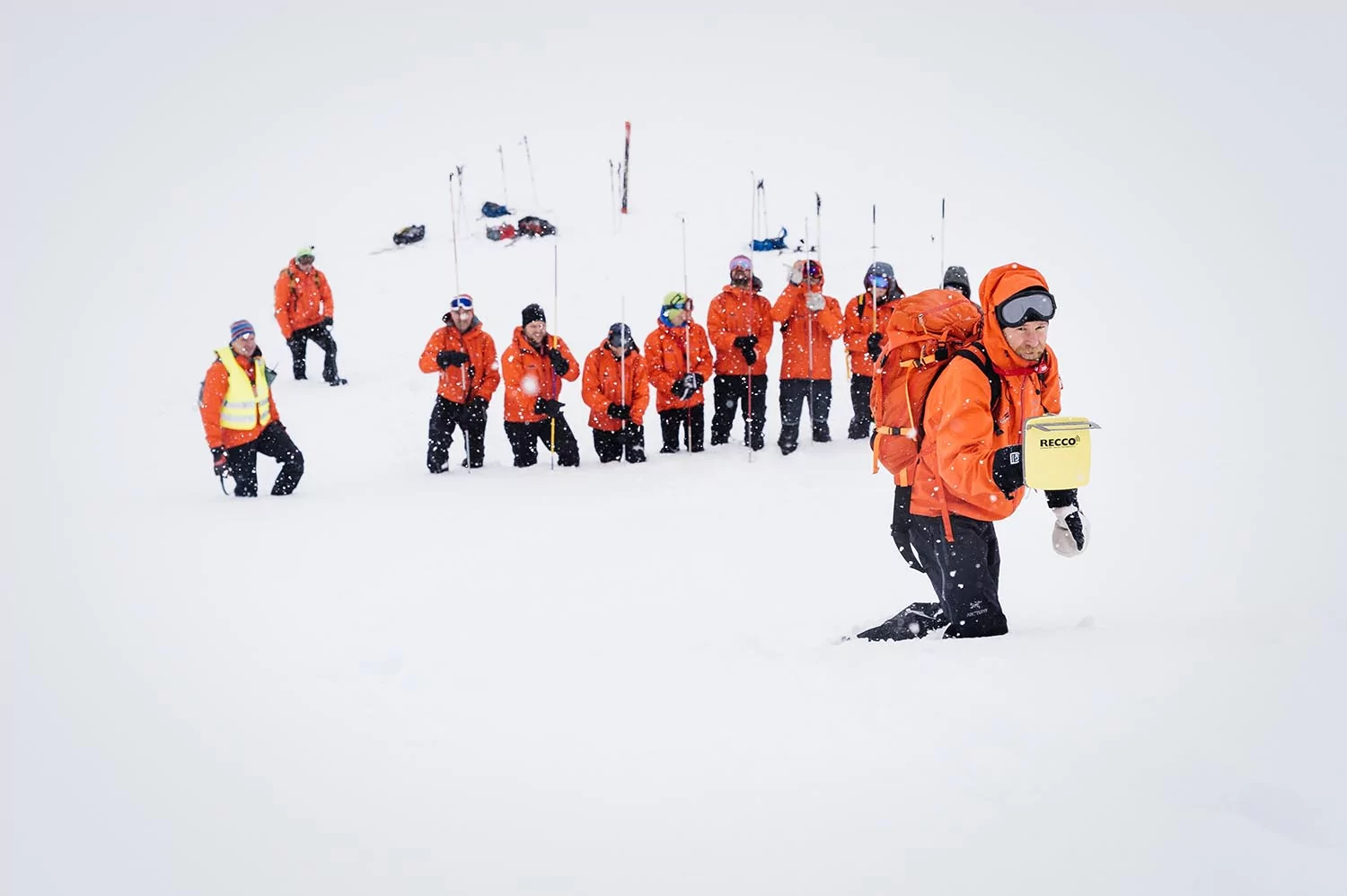
The Everest Base Camp Trek is generally considered safe, but it's important to take precautions to ensure your safety during the trek. Here are some safety tips to keep in mind: Hire a licensed guide or porter: Hiring a licensed guide or porter is highly recommended as they can provide you with valuable information about the trail, help you with your luggage, and ensure your safety.
Recommended Devices:
One device that is highly recommended for the Everest Base Camp Trek is a RECCO is a rescue technology used by organised rescue teams as an additional tool to more quickly locate people buried by an avalanche or lost in the outdoors .
Insurance
insurance is an important aspect to consider when planning for a trek to Everest Base Camp. Here are some things to keep in mind regarding insurance:
1. Check with your insurance provider: Before purchasing any additional insurance, check with your current health insurance provider to see if they cover medical expenses incurred while traveling overseas. Some insurance providers offer international coverage, while others do not.
2. Consider purchasing additional travel insurance: If your current insurance provider does not cover overseas medical expenses or emergency evacuation, consider purchasing additional travel insurance that specifically covers trekking and mountaineering activities in high altitude regions.
3. Ensure that the insurance covers high altitude trekking: Not all travel insurance policies cover high altitude trekking activities, and those that do may have restrictions or limitations. Make sure that your insurance covers the Everest Base Camp Trek and any potential medical emergencies that may arise during the trek.
4. Look for a policy with emergency evacuation coverage: In the event of a serious medical emergency, emergency evacuation may be necessary. Look for a travel insurance policy that includes emergency evacuation coverage, which can be very expensive without insurance.
5. Compare policies and prices: It's important to compare policies and prices from different insurance providers to ensure that you're getting the best coverage for your needs and budget.
6. Keep copies of your insurance policy and documents: Make sure to keep copies of your insurance policy and documents with you during the trek, and share the information with your trekking guide and any travel companions.
By taking these steps, you can ensure that you have adequate insurance coverage for your Everest Base Camp Trek, and have peace of mind knowing that you're prepared for any potential emergencies.

